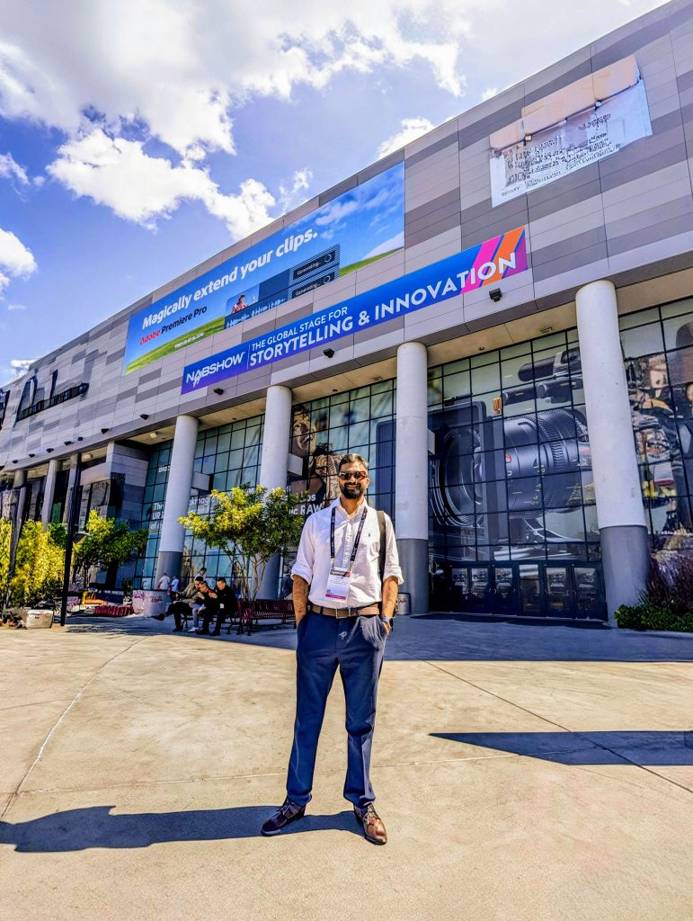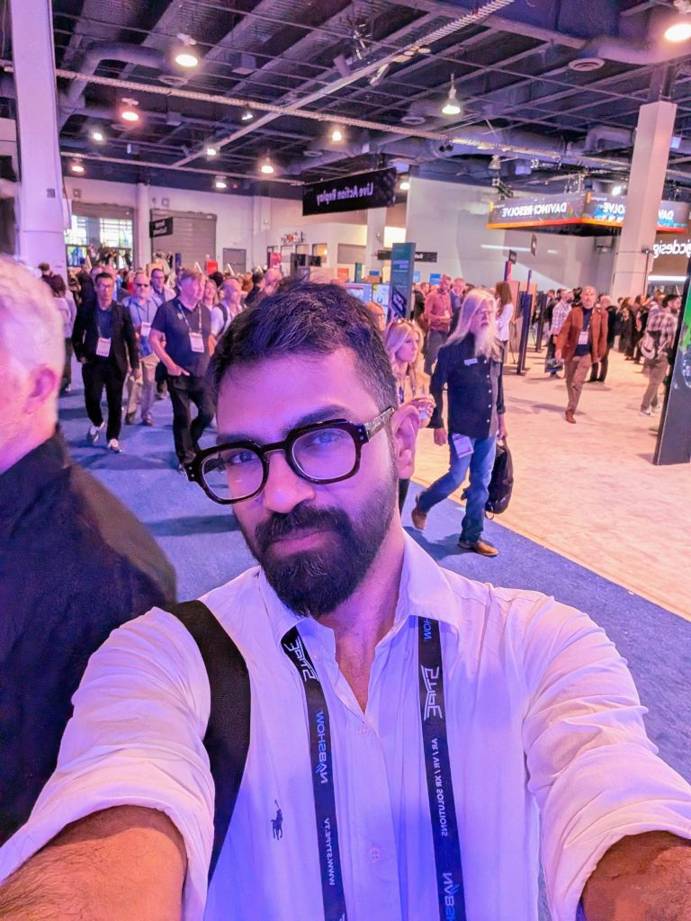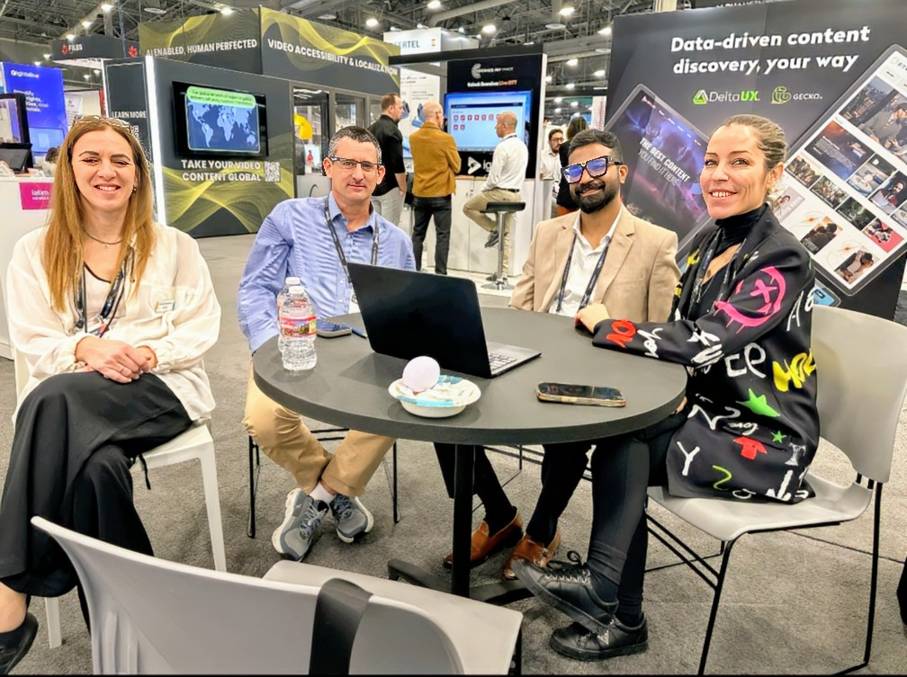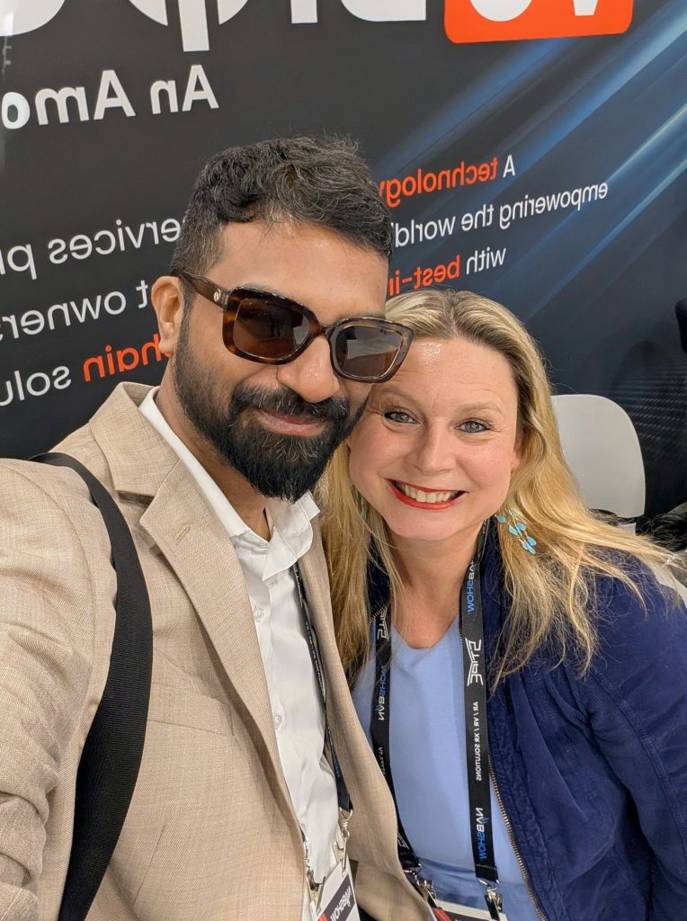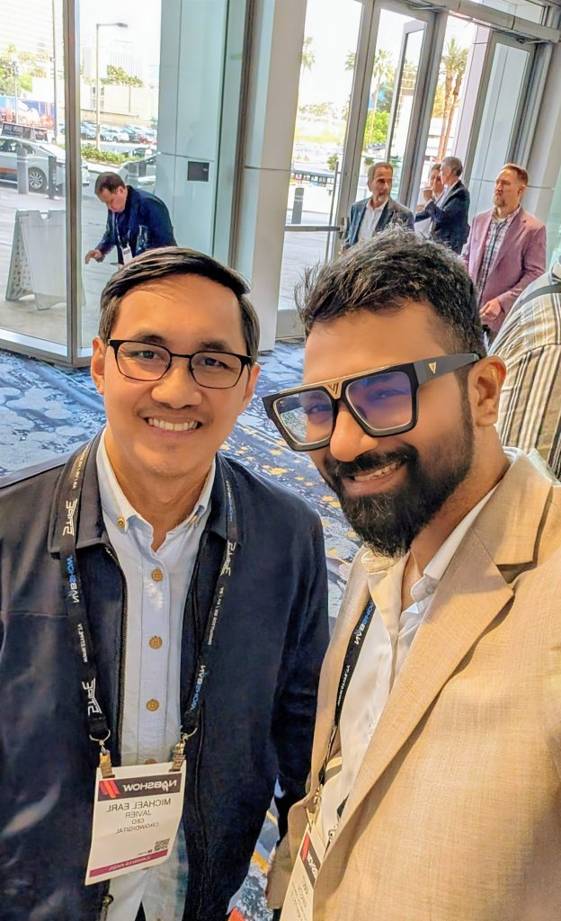Beyond the buzz: My take on The NAB Show 2025 – Modern media ops
Earlier this month, I had the opportunity to represent TO THE NEW at NAB Show 2025 in Las Vegas, and I’m still reflecting on the incredible amount of insight packed into these past few days. For anyone in media operations space, digital distribution, post-production, or localisation, this year’s show wasn’t just a tech showcase – it felt like a preview of where we’re all headed next.
Whether it was automation, metadata, or workflow design, my brain kept jumping to questions like, “How does this scale?”, “Can this further simplify delivery across platforms and markets?”, “Is the AI dubbing really humanlike—or just passable?”, “Can automated tech QC automation actually reduce effort—or just shift it?”, “Can localisation move faster without losing nuance?”, and “Are these workflows making life easier – or just louder?”
Like many around me felt, it was so obvious that more than the tools and tech, it’s about the people behind it and in front of it, passionately sharing the magic they’ve helped create. Between all the noise and big screens, it was the hallway chats, the energy at demo booths, and the shared laughs and ideas that really stayed with me. Tech will keep evolving, but it’s the people who make it meaningful.
Let me try to walk you through what caught my attention the most – think media workflows, localisation, distribution, and fulfillment.
(Full disclosure: The details and insights are through the biased lens of a media operations person – but hey, familiarity bias is real. If it had anything to do with media ops, localisation, metadata, workflow efficiency, and vegetarian snacks, I was all eyes and ears.)
We’re way past buzzwords – AI & automation is how things get done
AI had a massive presence, but unlike last year, maybe this time around, it wasn’t just about the hype. What really stood out was the practicality.
What is redefining the backbone of modern media operations:
- Automated QC and compliance checks integrated into production workflows
- Real-time subtitling and translation powered by large language models
- AI-driven metadata tagging for faces, logos, objects, and sentiment analysis
- AI-assisted dubbing with synthetic voices and lip-sync tech – widely adopted globally but still lacking strong support for many Indian vernaculars.
- Workflow orchestration platforms for end-to-end task automation, reports, and monitoring.
- Cloud-powered media distribution with multi-platform reach, smart versioning, advanced format support, and dynamic packaging built in.
- AI-powered content editing, summarisation, and reframing (horizontal to vertical) for platform-ready content
These aren’t future features – they’re already in action, saving hours of manual work and speeding up delivery. In some areas, it’s evolved and embedded. In others, it’s still finding its feet. But the point is, it’s happening.
Whether it’s automated content checks, legal compliance checks, distribution workflows, content conformance, captioning, or dubbing, AI is already here.
Time to smell the coffee. We have moved beyond bells and whistles now – it’s about using the tech for what really matters: functional efficiency, better workflows, and scalable media operations.
AI in localisation – It can’t imitate the human touch (Yet)
One of the most talked-about shifts this year was the adoption of AI in localization and dubbing specifically.
From real-time translation and scripting to AI-powered voice dubbing, the scale, the ease, and the faster turnaround times these advanced tech and models offer are genuinely impressive and cool. But I won’t pretend it’s magic. Not yet, anyway.
From the hallway conversations and demo, it was so evident to me that AI in localisation has come a long way. I still feel it can fall a bit short sometimes when it comes to capturing the authentic human emotional depth and cultural subtleties.
Here, I am not only talking about specific use cases I had in mind but also some particular content themes and genres where I just knew AI still had some ground to cover, and there was, in a sense, a maturity gap. In AI terms, I am certain that “maturity” will come with upcoming models in the near future.
Personally, I think a hybrid approach makes the most sense right now – especially for certain content categories. Let AI do the heavy lifting, and bring in creative human talent where authenticity and nuance really matter.
That being said, AI is evolving and improving really fast.
After taking some exciting demos, specifically dubbing ones, I continuously thought that AI and automation still can not match and mimic the deep, complex human emotions. It is inevitable, though, and when that happens, which will be sooner than anybody expects, it’s really going to be a game-changing disruption.
I also felt that at present, for many Indian languages, AI dubbing has limited or no support. So it may take more time for these amazing models to fully integrate Indian languages. But, of course, it’s only a matter of time before the AI voice and dubbing tech upgrades, and this will surely open up entirely new possibilities for the Indian media and entertainment industry too.
Automated, platform-led delivery. I am not even surprised!
The transition in this has been happening for some years now, and this year – as I very much expected and was looking forward to – it was smarter, more practical, and more functional, with fewer frills and driven by what many in the industry really need.
I saw so many demos where:
- These modern smart workflow orchestration platforms manage the workstreams from tech QC to ingest to packaging to publishing.
- Content pushed seamlessly to multiple platforms like magic, almost.
- Metadata creation and management, rights, and compliance are handled with very little or no human intervention.
- Platform-level packaging was fully automated.
Speed, generative AI, automation, optimization, next-gen, real-time, and smarter – so many buzzwords, and I can proudly say that the fluff was less this time around, and these buzzwords were often doing justice to the tech that was shown, with all the bright lights, screens, and passionate people.
People who were passionate, knowledgeable, proud, excited, and somewhat tired – especially in the second half of the day—were indeed the drivers, ensuring that technology, AI, automation, and similar advancements remain somewhat human and for humans.
Embedding this with intent and practicality is something we have also been steadily weaving into what we do at TO THE NEW.
What I’ll remember most
While the advanced next-gen tech demos and conversations were vital and exciting, the real magic of NAB 2025 was in the people.
Here’s something I shared elsewhere, but I believe it belongs here too:
So many great chats—here are a few that really made my NAB.
- Wayne from OOONA always brings a sharp mix of wit and workflow wisdom; their automation demo hit all the right notes
- Michael and Toni—really impressive to see their journey evolve into impactful work bridging AI and media ops.
- Yelena – I loved our deep dive into the future of localisation—she was knowledgeable, self-aware, and generous with her insights. Grateful for the support and perspective!
- An awesome hands-on demo and insightful sessions at the AVID booth – watching the chief editors behind Wicked, Deadpool & Wolverine, Gladiator II, and Dune: Prophecy share their process was unforgettable.
- Witnessed some truly exciting demos involving AI voice dubbing, media workflow platforms, AI-based dubbing, closed captioning and translation tools, automated tech QC for multiple OTTs, and numerous innovative localization and distribution solutions.
And honestly, reconnecting with some familiar faces reminded me why I love this space.
These weren’t just catchups – they were the kind that leave you buzzing with ideas and fired up for what’s possible.
What stood out for me at NAB
Coming out of NAB, and speaking purely from my lens, there were some takeaways that genuinely stood out for media ops:
- AI isn’t replacing creativity yet – it’s clearing space for it.
- Automation isn’t something you add later – it’s something you build around.
- The real value lies in how workflow automation and distribution are built into the process.
- One size fits all doesn’t cut it—customization is everything, whether it’s AI in localisation, workflow orchestration, or any part of modern media ops.
- NAB reminded me that it’s not just the next-gen tech that moves us forward—it’s the people aligning it with purpose, scale, and creativity.
Looking ahead
To me, NAB wasn’t about the flash—it was about the direction. It felt like a quiet confirmation – not just for me, but for all of us at TO THE NEW—that the work we’ve been doing behind the scenes is steadily becoming central.
It’s something I’m personally excited about—and something we at TO THE NEW are actively building toward.

